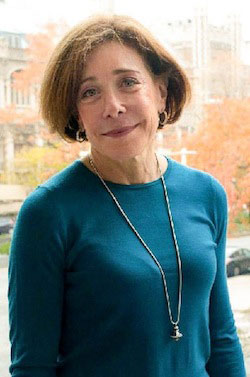The Charter School Difference: Not Quite What We Imagined
TC’s Priscilla Wohlstetter and co-authors bring new information to a longstanding debate
By Siddhartha Mitter
Twenty-one years after the first charter schools opened in Minnesota, what do we know about charter school performance in the United States?As the charter school movement has grown to comprise 5,600 schools serving 2 million students, the debate that question inspires has tended to be impassioned but ill-informed, with charters caricatured as either scourge or panacea.
Until now. In Choices and Challenges: Charter School Performance in Perspective (Harvard Education Press, 2013), Priscilla Wohlstetter, Distinguished Research Professor at TC, and co-authors Joanna Smith (University of Oregon) and Caitlin C. Farrell (University of California-Berkeley) add welcome nuance to the conversation. Analyzing more than 400 journal articles and think-tank papers they chose according to rigorous inclusion criteria, Wohlstetter and her coauthors clarify what is known with respect to charter school innovation, student performance, accountability outcomes, competition and more.
On student achievement, which Wohlstetter calls the “lightning-rod issue,” she says “the-big finding that continues to hold up in state after state” is that “charter schools are over-represented at both the higher and lower ends of student achievement.” Which raises the policy question: “Why are we not replicating schools at the high end, and why are authorizers not closing down schools at the low end?”
On the question of how charter schools use their autonomy,
the answer seems to be: not much and not terribly well.
The evidence suggests that charter schools do not always use the autonomy they’ve been granted in ways that improve test scores. In fact, the research shows that charters overall are doing very little to tap the potential of innovative strategies such as hybrid classroom/online teaching, which can be effective with at-risk students and other populations. “I’d like charter schools to be bolder and push the envelope beyond a classroom of one teacher and 30 students,” Wohlstetter says.
Their failure to do so may be related to another finding: As the charter movement scales up, through both for-profit and non-profit school networks --and in some states charter districts, school-level autonomy may wane. Charters are increasingly run by Education Management Organizations (EMOs) and their non-profit counterparts, Charter Management Organizations (CMOs). CMOs in particular have been “fueled by a huge infusion of philanthropic money,” Wohlstetter says. They often perform well but remain insufficiently studied; the first journal article on the topic, by Wohlstetter and her co-authors, appeared only last year.
In considering the hot-button issue of whether charters are more racially segregated than other schools, the authors say that the great diversity of schools and the immense variance in the state and local rules that govern them make it impossible to generalize. For example, 16 states have rules requiring charters to reflect the diversity of surrounding communities. In other areas, the charters’ admissions policies favoring siblings can perpetuate racial imbalance.
Charters have demonstrated some success in getting parents more involved, although the benefits of that involvement are not always apparent or measurable.
Despite all their flaws and inconsistencies, charter schools are unlikely to go away any time soon, Wohlstetter says. Having survived an early period of “let all flowers bloom,” as well as subsequent waves of expansion, refinement and scrutiny, they are now a fixture of the education landscape.
“I don’t think something is out there that is going to
replace charters,” Wohlstetter says, “They were created as laboratories for
innovation. The question is whether they can offer us lessons to help him
improve traditional public schools.”
Published Wednesday, Sep. 25, 2013
